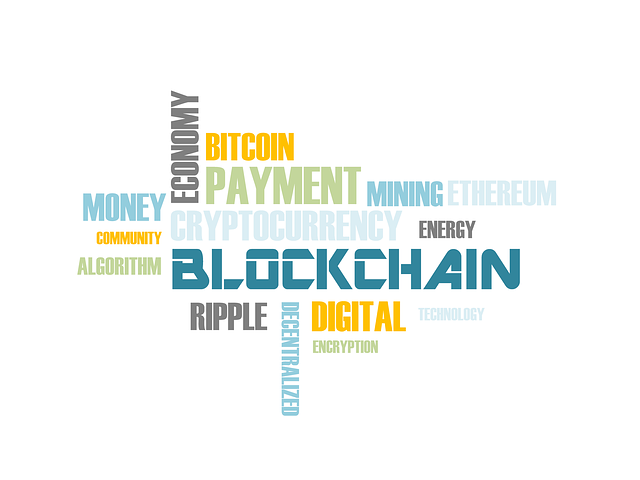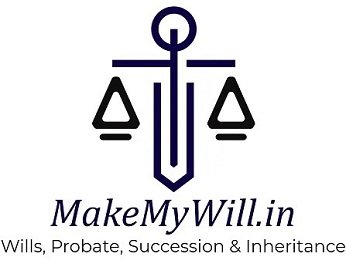
Inheritance & Blockchain
Thing(s) pertaining to ownership, implementation of inheritance, management and virtualization of assets through blockchain technology, which were impossible or infeasible a decade back, have now become feasible. This paper will deal with a possible solution to tackle the problems related to ownership and inheritance with special emphasis on Indian laws and Indian context. The government came up with the plan to assign an identity to all the citizens, and they have managed to successfully implement it using Aadhaar system. Now, in all practical sense, the majority of Indian population has an identification number assigned to them which is connected with their biometrics and personal data. But the issues pertaining to infringement of privacy and security of sensitive personal data occurred when the government wanted to connect everything, including mobile numbers, PAN, ration cards etc. with Aadhaar, but that’s where all the problem starts. The centralized platform for data storage and bulkiness of the above data would render it prone to cyber attacks and hacks. Also, it would be very difficult for a centralized system to assign a single identity to everything owned by an individual, and it will have privacy related issues as well as problems. But this problem can be managed by smart contracts and blockchain technology. The legality and basics of smart contracts have been discussed in the paper authored by the author which can be accessed through https://docs.google.com/document/d/1oASCmhx8zA-oBUNWXolp9dGThxpSCsNj_G5QSNkpbNQ/edit?usp=sharing. Basically, the smart contracts are self-enforceable contracts, where even parties to the contract can’t stop the enforcement of these smart contracts, unless and until the criteria which have been specified is met. And for all practical purposes, we can say blockchain is a chain of blocks which helps maintain databases and helps to share and to transmit information and data. And as ownership of everything is unique in the real world, each of these things can be assigned a unique identity in the virtual world and, this has been made possible with the use of blockchain technology. The blockchain technology can be combined with Aadhar to track these digital assets. In this paper, we will also try to tackle the modern problems of inheritances through blockchain technology, which have been overlooked or have not been tackled previously by the conventional methods, as in the present world the assets also include virtually and digitally stored assets, passwords, ids, crypto assets and other digital information. By Implementing the above issues through the blockchain technology, most of the problems which were impossible to be solved prior to the advent of the blockchain technology, now, can be solved through computer science based algorithms.
The implementation of the idea in this paper would render the implementation and administration of software to implement inheritance related issues out of the control of any human being, which would render it temper and corruption free, trustworthy and easily executable. We shall herein after discuss the benefits, methodology, feasibility, and compliance with laws, etc.
What is a will?
“Will means the declaration of the intention of a testator with respect to his property which he desires to be carried into effect after his death”. It comes into effect only after the death of the person who is making it, and it is revocable. Both criteria come under the basic definition of the Wills.
Below are the relevant definitions relating to the same:
● Testator/ Legator: The maker of the will.
● Legatee/ Beneficiary/ Testatix: The one who has been given the property under the will.
● Operation/ Execution: Takes place after the testator dies.
● Probate of the will: The word means to prove or validate and is a procedure by which will is approved by the court as valid, and the last wish of the testator and appoints a person as an executor of the will.
In case there is no will, the property is divided as intestate as per the personal laws of an individual in India and laws relating to intestate succession.
Blockchain and its advantages:
The blockchainis a detailed, real time ledger/database of anything that can be recorded (from finance based transactions to ownership of physical assets) stored in a decentralized/ distributed peer to peer fashion. The whole of the record is encrypted and time stamped. The users, who own the assets or essentially, the part of blockchain for that matter can tamper/ edit the data, and the access to these privileges are gained because they have a private key of their own which is like a digital signature or password or proof of their ownership. Every node owns a copy of this database, so essentially, the majority will have to agree to keep the database in sync. The tampered copies would not be considered as this whole system is based on consensus.
Blockchain can be categorised into two parts: public and private, depending on the conditions and accessibility of blockchains. The best thing is that all these advantages come with the state of the art security and storing databases with this approach has many times been described as ‘hack proof’, though it might have certain security issues of its own, these issues can only be overcome by implementing the method which would render the theft itself as infeasible.[1]
The advantages of implementation of blockchain technology for the management of assets and inheritance are enumerated below:
● The implementation of Wills through blockchain goes to the core of the problems of family courts litigation. This method of storing Wills will lead to an easier determination of actual intent, at a defined time.
● The bogus challenges would be dismissed faster, and genuine Wills would be easier to uphold, and courts would be able to determine the validity of evidence more quickly. [2]
● The stored content is a cryptographically encrypted digest of the required file which is linked to a definite time in which the document was submitted/ stored giving proof that the data/ file existed at a definite particular instance of time.
● Anonymity, privacy and decentralized proof of data.
● The document will be time stamped even if the organization itself goes down.
○ Establishing ownership of the document or asset without the data being revealed is also possible through the blockchain technology, and
■ The digest as mentioned above could be publicly revealed, and if needed it could be proved that the data existed through which the digest is generated. The concept of the ‘digest’ has been discussed herein after in this paper.
○ Document timestamping
■ One of the best applications of blockchain technology is the proof that the data was created or modified at a certain time without the fear of it being manipulated. Technically, the resources worth 500 best supercomputers, i.e., bitcoin network could be used for verifying and certifying the truthfulness of the data.
○ Checking the document integrity
■ If the document is uploaded and it is modified and re-uploaded again, the hash of the document will change, and the system will recognise it as a different document on the blockchain network. Therefore, in essence, the certified document cannot be tampered with/ changed.[3]
Basic model and structuring:
The self-executing and human-intervention free Wills could be made using the Aadhaar information and relevant Aadhaar database. The automated process will run on thousands of computer apparatus simultaneously to ensure guaranteed reliability and hence would be visible to everyone who wants to see the database. This system would run and implement the software without any human intervention.
The said software will be linked to Aadhaar and death certificate database, which is a database which keeps the record of the people who have died. People will be given the ability to create digital- cryptographic Will with information of legatee, the conditions of execution and so on and forth as may be required. Once the person is dead, and the death certificate records are updated which might also be linked to Aadhaar, the will, or the intestate succession can take place automatically. The will gets automatically executed according to the last wishes of the testator.
The document will be in public domain but will be private in nature. This statement might sound paradoxical, but the statement can be appreciated by understanding the example below:
The names and content of the Will will be kept hidden, but the existence of the will would be visible to everyone with the internet access in the world. Instead of the will being identified by the name, email or phone number of a person, the will could be given a cryptographic address such as 948757aasdDDHn88Bnl. The people on the internet would be able to see that the will with this address was created on a particular date and time along with the location of the creation at most but never the real identity of 948757aasdDDHn88Bnl is, and no one would be able to determine this identity except for the beneficiaries, individuals, and attorneys involved.
All the categories of the people mentioned above will be able to decode the cryptographic address above and based on the secret key which they would use to access this document, their privileges can be differentiated, and the file cannot be modified without the secret key and 2-factor authentication by the testator.[4]
The immediate and most intuitive way to solve this problem would be to let an attorney or relevant authority take care of the procedure and system will move on, on its own. But then, again, the problem with human intervention would come into being and hence my premise: “Every existing movable and immovable property can be given a cryptographic identity on a blockchain” will come into being. It would be easy and cost efficient to maintain the registeries of assets like cars, houses, factories and any other asset(s) which are present in the real or virtual world and has the property of being differentiated on the blockchain along with an identification number assigned to them. The previous system might be feasible today, but it won’t be a complete game changer but the second system would have far wider scope than the scope of this paper ranging from tax evasion problems to delays in judicial systems in various systems including but not limited to inheritance. For the purpose of this paper and discussion ahead, we might say that such implementation has taken place or deemed to have taken place, or they exist as simple text files which contain the relevant information of the asset, so the nature of the asset is not disputed, but the help of an attorney or executioner might be impertinent in the second case.
Technical strategy, problems, and analysis:
All the relevant documents for one asset could be put together in one unit which would now be referred to as a thread, and many threads can be combined to form bundles.
The thread could consist of:
● Property
● Factory/ company
● Indivisible assets like an old idol having a religious value to the family and may be considered priceless
● Vehicle
● Phone number
● Passwords
● Cryptocurrency wallets
● Stocks and other financial instruments
● Ownershipof copyrights of videos and digital content, etc.
The above concept, in the future, would be termed as smart properties derived from smart contracts. The smart property will require a totally different legal framework and technological implementation in order for it to become a reality.
This paper will deal with which we might refer to as smart Wills. There are several problems with the current system apart from the ones listed in the previous sections of the paper. The process as a whole mostly depends on the executor who in most of the cases are appointed by the testator and is responsible for the execution of the will. Wills are in general used for distributing monetary possessions and are not equipped enough to distribute the digital data and digital rights. This problem is grave and cannot be solved by conventional methods.
Not everyone would need an account on this blockchain as the transfer would have taken in official records and the same can be conveyed by an email or text message or post. The only requirement would be that of Aadhaar number.
The smart wills can also be used for the functions meant for more than the wills. A bundle can be put conditions on, which might resemble the will. But it can have special functionalities as well. Suppose someone wants to put a condition on a particular bundle “The person with Aadhaar number x should be given the bundle on 30 March 2025” because he/ she will turn 18 in that year. This can be made possible.
World Economic Forum predicts that around 10% of the total global wealth would be stored on the blockchain based assets within a decade.[5] So essentially people will hold their wealth in the form of digital assets, crypto assets, crypto securities, crypto currencies, etc. Also, India is pro digitisation and has always been early and rampant adopter of technology. The advantages being offered far supersedes the cost required.
Proof of Life:
The proof that a person has died must be established by death registriesas it would make the system secure against possible exploitation. Another provision can be added with the assistance of humans where an attorney with power of attorney from the deceased testator would be able to provide the proof of death, and after certain conditions and criteria are satisfied, and on proof of the death of the person, his will can be accordingly be executed. Essentially, as soon as the death of the person is registered, it would trigger the execute class in the program and the will of the deceased would be executed.
But what happens if the person dies intestate? Then there are two paths: either the claims can be made through courts or a second approach can be applied, i.e., all the digital assets on the blockchain would still be there, and as soon as the person’s death is registered, all his smart property and digital assets can be divided according to the personal law of the citizens. This would require the implementation of the oracle[6] to determine the circle or tentative rates of the smart properties. The oracle’s implementation is also deemed necessary so as to determine whether the will/ gift is valid according to the personal law of the individual. This way, until the legislature intends to go for UCC(Uniform Civil Code), might be easier to implement using this mechanism, the inheritance would take place according to personal laws of an individual.
Also, to divide intestate the Aadhaar data can be accessed for quick determination of the successors without actually recording the information. So, essentially, the algorithm would interact with the database but only give output. The algorithm and its methodology will be encrypted, and it will be very easy to obtain all the successors and their respective shares. The exact methodology and algorithm for each personal law are outside the scope of this paper. This would reduce the burden on courts, and only the special cases would be brought to the courts. Normal intestate successions would be automated this was. The algorithms could be evolved or altered according to the changing laws.[7]
The application of an AI
The last human intervention remains with regards to the division of the property using the architecture, configuration or blueprints of the property, companies or other similar assets. The other assets could be deemed to have been notionally sold at the market or rational rates, and the proceeds could be divided according to the shares of the successors. But the division of property and company may still be problematic in the absence of a will. So, every division would be done, and the resultant would be fed to an AI. The AI through deep learning will be able to determine as to how to divide the property or a company. These could still be verified by the humans, and, this process would not become obsolete in the future, but AI will provide huge assistance in solving these disputed matters. The ambiguities could still be challenged in courts.
Software development
The software would be implemented on private blockchain network as the blockchain will continuously interact with sensitive data of the citizens of India. For this process to be smooth, a KYCd layer could be implemented on top for the smooth transferring of the smart properties along with its accountability. The private blockchain could consist of various unions, bar associations, and government departments. The user’s data would still be protected, and it is not a completely decentralized solution but seems to be a feasible solution which can be implemented in this manner.
The project will consist of two things: mobile application and website. These platforms could be used to convert the properties into smart properties (possible after having support from various government departments) or make the smart wills. The Aadhaar will be important for the practicality of the project as all the users will interact with each other using Aadhaar numbers masked with cryptographic addresses.
Use cases:
Various use cases, situation, potential use, and problems, in the view of the author, can be solved as illustrated below:
● A person may have an only original copy of the document or immovable or moveable properties in the real world, and therefore each one of these will have their own unique identity, so will all the digital assets and smart properties. So, once the smart property (representing the property/ asset in the real world) is sold/ gifted, you lose the ownership of the property/ asset in the real world, and you will be no longer in possession of the virtual proof as the private key would be transferred to new owner. The virtual (smart) contracts on blockchain would supercede the handwritten or other forms of digital contracts. This will revolutionize not only the inheritance and succession but also how things are purchased and contracts are made.
● Another application would be if the government mandates to put all the records on the blockchain, the trail of the property would become more transparent and clear. This would help reduce the menace of black money and increase accountability.
● The trail would also help a person determine what that person possess. For example, a person might be the owner of a very old antique or another priceless thing, and this method would ensure that his/ her ownership rights are not lost with the generations.
● The software could be implemented in such a way to register property on blockchain as soon as the property is registered on a digital platform using Aadhaar. This would also help curb the use of black money movement in the purchase of property as the oracle would always be on a lookout, and an AI will automatically trigger the suspicious transaction.
The main advantages of the blockchain in itself are as below:
► Cost and complexity reduction
► Increased transaction procession speed
► Reduced administrative burden and transaction costs
► Improved audit quality
► Autonomous execution
► Proven and authenticated transactions
► Reduced litigation
► Real-time transactions
► Reliable and irreversible transfers of digital goods
► Inclusive participation of citizens
► Supporting Internet-of Things (IoT) ecosystems
► Data protection and data integrity assurance
► Crypto-certified data
► Trusted record-keeping
► Reliable and resistant to outages
► Transparency and traceability of transactions
► Tax fraud reduction
► Reduction in money laundering
► Ensuring the correct use of funds[8]
Government initiatives in India implementing blockchain technology:
● The governmentof Maharashtra in association with FICCI organized the Maharashtra Tech Summit to enable Digital Transformation through Blockchain. Topics covered Reimagining Financial Inclusion with Blockchain, Blockchain – Enhancing skill and talent landscape of India, Moving beyond Financial Services – Improving Supply Chain & Manufacturing with IoT – Driven Blockchains, and Blockchain and Governance.
● The governmentof Andhra Pradesh hosted the first ever Agriculture based hackathon in liaison with CII, and Bill and Melinda Gates Foundation to open up the dimensions of technology in the agricultural sector and value chain.
● West Bengal Land Records is in the process of testing a distributed ledger based blockchain solution POC to enable land registration, transfers and mutations, duty payments, record modifications, verifications and reporting functionalities.
● Telangana is also exploring using Blockchain for Land Records through an RFP for a System Integrator Andhra Pradesh has started working on a POC for Land Records using blockchain in Dec ‘ 17.
● NITI Aayog along with Proffer organized a blockchain summit and hackathon to drive efficiency, transparency, privacy and cost across multiple sectors.
● The governmentof Rajasthan organized a hackathon on technology themes including blockchain to explore new age technology based problem solving for the state.
BSFI sectors implementing blockchain:
● ICICI Bank implemented an international trade finance transaction with Emirates NBD, enabling all parties of the transaction to access real time data.
● ICICI Bank led a real-time remittance transaction, enabling instant money transfer an ICICI bank Mumbai, India branch, to an Emirates NBD branch in Dubai.
● Axis Bank has launched a service for its retail customers in India to receive payments from RakBank in UAE and for its corporate customers in India to receive payments from Standard Chartered Bank in Singapore.
● Bajaj Allianz General Insurance has hastened the process of claims settlement in the travel and motor segments by leveraging on blockchain technology.
● YES,Bank is using a smart contract on a blockchain in order to allow Bajaj Electricals to process disbursement of funds and discounting to its vendors.
● State Bank of India, is in the process of deploying a smart contract for KYC solution over BankChain, a community of Indian and foreign banks which are developing blockchain solutions.
● HDFC Life insurtech hackathon generated a first of a kind buzz in life insurance sector for the use of blockchains and other new age technology use like IOT and AI to come up with solutions for use cases.
The blockchain is a solution to many traditional problems which might be solved by implementing the new technology and make the system more reliable and transparent.
By
Siddharth Dalmia, B.Tech.(DAIICT)
Email:dalmiasiddharth1994@gmail.com
Mobile: +91 9971799250
[1]Bernard Marr, ‘Practical Examples Of How Blockchains Will Be Used In Legal Firms’ (Forbes.com, 2017)
[2]Nuno Menezes, ‘Blockchain Apparatus Launches A New Trusted Will System’ (Inside Bitcoins, 2015)
[3]‘Proof Of Existence’ (Github, 2018)
[4]Dick Eastman, ‘Blockchain Based Crypto-Will Fulfills Last Wishes’ (blog.eogn, 2016)
[5]Realizing the Potential of Blockchain: A multistakeholder Approach to Stwardship of Blockchain and Cryptocurrencies. url: http://www3.weforum.org/docs/WEF_Realizing_Potential_ Blockchain.pdf (visited on 09/02/2017).
[6](2018)
[7]Michel Nicolas and Almonacid Vicente, The Legacy Project (1st edn, Legacy Network 2017)
[8]Roadmap For Use Of Blockchain In Karnataka Government – DRAFT(Blockchain Conclave 2018)

CROSS BORDER TRANSACTIONS: CRYPTOCURRENCY AND FOREIGN EXCHANGE MANAGEMENT ACT (FEMA)
Cross Border Transfer of cryptocurrency is a significant aspect of its being as cryptocurrencies are traded through online platforms and these platforms facilitate the exchange of cryptocurrency into another currency including a fiat currency. This raises questions under India’s foreign exchange control law, i.e., the Foreign Exchange Management Act (FEMA). This article intends to analyze the possible categorization of cryptocurrencies under FEMA and the legal implications to follow.
TAXATION OF CRYPTOCURRENCIES IN INDIA
TAXATION OF CRYPTOCURRENCIES IN INDIA Cryptocurrencies have been subjected to the spotlight of the decade and have been grabbing the attention of the tax authorities essentially due to the high prices at which they were seen trading on exchanges in India and across...
CROSS BORDER TRANSACTIONS: CRYPTOCURRENCY AND FOREIGN EXCHANGE MANAGEMENT ACT (FEMA)
Cross Border Transfer of cryptocurrency is a significant aspect of its being as cryptocurrencies are traded through online platforms and these platforms facilitate the exchange of cryptocurrency into another currency including a fiat currency. This raises questions under India’s foreign exchange control law, i.e., the Foreign Exchange Management Act (FEMA). This article intends to analyze the possible categorization of cryptocurrencies under FEMA and the legal implications to follow.
IS CRYPTOCURRENCY THE FUTURE OF FINANCIAL SYSTEM?
IS CRYPTOCURRENCY THE FUTURE OF FINANCIAL SYSTEM? A cryptocurrency is a digital currency that's created and managed through the help of advanced encryption and stored in a digital ledger or computerized database using cryptography. The word “crypto” comes from secret...
FDI and Cryptocurrencies in India
FDI and Cryptocurrencies in India The FDI is regulated under FEMA Act. The FDI Policy and TISPRO, made under FEMA, regulate FDI in Indian entities. The Exchange would be regulated either as Non-banking finance and asset management companies or E-commerce platforms...





Recent Comments